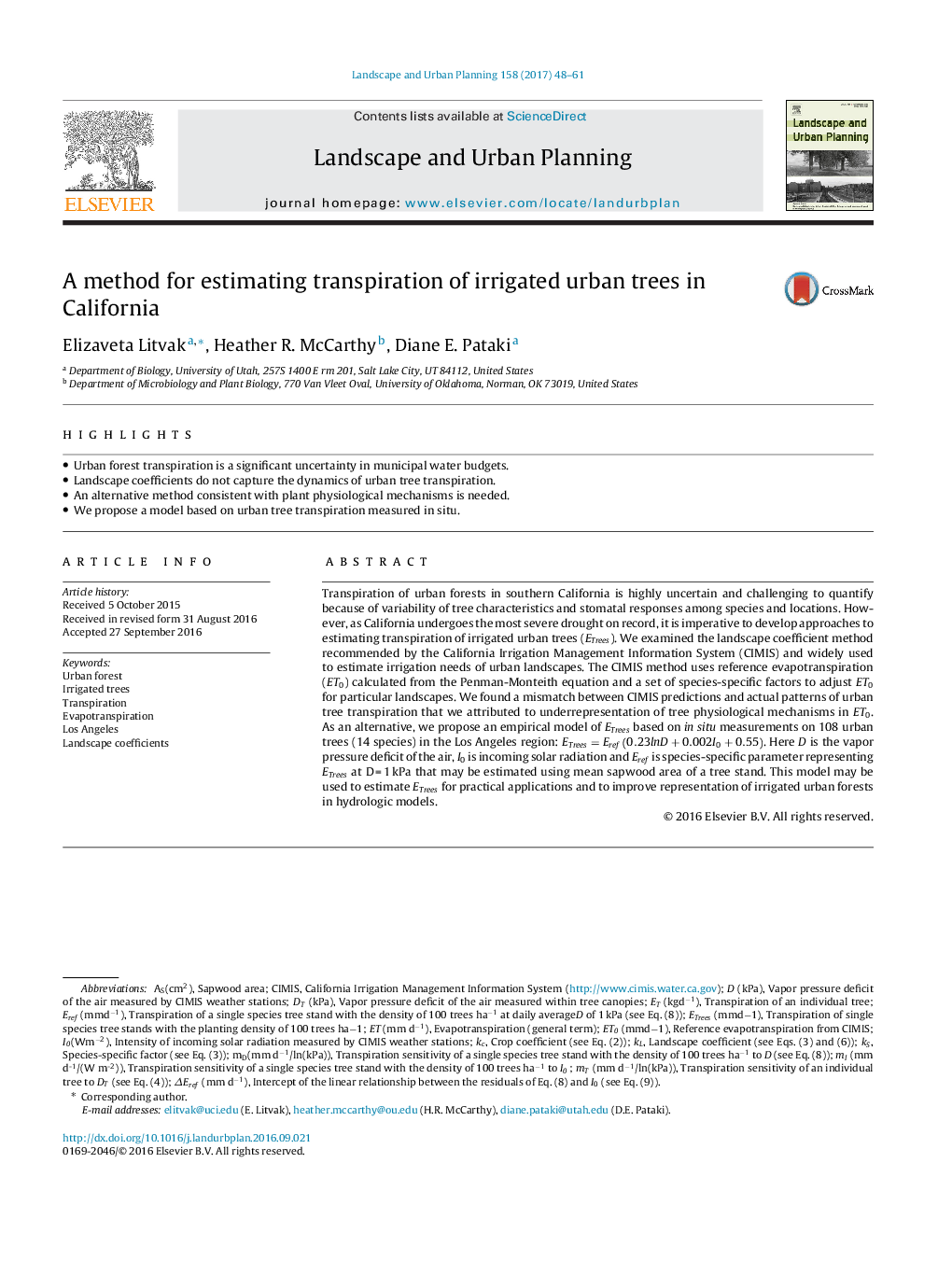| Article ID | Journal | Published Year | Pages | File Type |
|---|---|---|---|---|
| 5115111 | Landscape and Urban Planning | 2017 | 14 Pages |
Abstract
Transpiration of urban forests in southern California is highly uncertain and challenging to quantify because of variability of tree characteristics and stomatal responses among species and locations. However, as California undergoes the most severe drought on record, it is imperative to develop approaches to estimating transpiration of irrigated urban trees (ETrees). We examined the landscape coefficient method recommended by the California Irrigation Management Information System (CIMIS) and widely used to estimate irrigation needs of urban landscapes. The CIMIS method uses reference evapotranspiration (ET0) calculated from the Penman-Monteith equation and a set of species-specific factors to adjust ET0 for particular landscapes. We found a mismatch between CIMIS predictions and actual patterns of urban tree transpiration that we attributed to underrepresentation of tree physiological mechanisms in ET0. As an alternative, we propose an empirical model of ETrees based on in situ measurements on 108 urban trees (14 species) in the Los Angeles region: ETrees=Eref(0.23lnD+0.002I0+0.55). Here D is the vapor pressure deficit of the air, I0 is incoming solar radiation and Eref is species-specific parameter representing ETrees at DÂ =Â 1Â kPa that may be estimated using mean sapwood area of a tree stand. This model may be used to estimate ETrees for practical applications and to improve representation of irrigated urban forests in hydrologic models.
Related Topics
Life Sciences
Agricultural and Biological Sciences
Ecology, Evolution, Behavior and Systematics
Authors
Elizaveta Litvak, Heather R. McCarthy, Diane E. Pataki,
